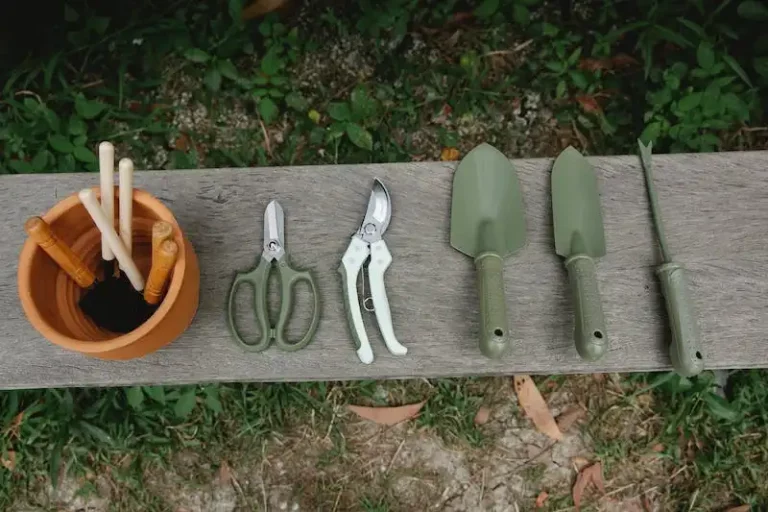Growing a ZZ plant, also known as Zamioculcas zamiifolia, is a great choice for those looking to add a beautiful and low-maintenance plant to their indoor collection. With its glossy and dark green foliage, the ZZ plant can thrive in a variety of conditions and requires less maintenance compared to other types of houseplants. In this guide, we will consider the basics of growing and caring for a ZZ plant, including propagation, watering, fertilizing, troubleshooting, and more.
One of the reasons why the ZZ plant has become a popular choice among gardeners is its ability to thrive even in areas with low light. While it does prefer bright indirect light, it can also survive in low light conditions or fluorescent lighting. This makes it an excellent plant for those who want to add greenery to areas with less natural light, such as offices or rooms with few windows.
Understanding the growth habit of the ZZ plant is essential for providing the best care. The plant has a rhizomatous root system, which means it stores water and nutrients in its thick underground stems. This adaptation allows the ZZ plant to survive in dry conditions and go without water for long periods. However, it is important not to overwater the plant, as it can lead to root rot and cause damage to the plant.
When it comes to watering the ZZ plant, it is best to let the top inch or two of the soil dry out before watering it again. This will help prevent overwatering and ensure the plant receives just the right amount of moisture. It is also essential to use a well-draining soil mix and a pot with drainage holes to allow excess water to escape.
The ZZ plant is known for its ability to tolerate neglect and can thrive even when watered infrequently. However, it is important to keep an eye out for common pests that can occasionally affect the plant, such as spider mites or mealybugs. If pest infestations occur, it is best to treat them promptly to prevent damage to the plant.
When it comes to fertilizing the ZZ plant, it is best to do so sparingly. The plant requires very little nutrients and can do well with a slow-release fertilizer applied once or twice a year. Over-fertilizing can lead to salt build-up in the soil and cause damage to the plant. It is also important to wipe the leaves occasionally to remove dust and improve the plant’s appearance.
In terms of propagation, the ZZ plant can be propagated through division or by leaf cuttings. Division involves separating the plant into smaller sections, while leaf cuttings can be taken from healthy leaves and planted in a well-draining soil mix. Both methods can be successful with proper care and will eventually result in new plants.
To conclude, the ZZ plant is a lovely addition to any indoor space, offering beautiful foliage and low-maintenance care. By following the guidelines and tips presented in this guide, you can successfully grow and care for a ZZ plant and enjoy its beauty for many years to come.
Care Guide for the ZZ Plant
The ZZ plant, or Zamioculcas zamiifolia, is a popular choice among gardeners due to its basic care requirements and attractive attributes. This slow-growing plant is native to Eastern Africa and belongs to the same family as peace lilies. The ZZ plant can reach a height of about 2-3 feet, and its dark green, glossy leaves add an elegant touch to any indoor space.
When it comes to watering the ZZ plant, it is important to let the soil dry out between waterings. Overwatering can lead to root rot, so it’s always better to underwater than overwater. A good method to gauge when to water is to stick your finger into the soil up to your knuckle – if it feels dry, it’s time to water. However, make sure not to let the plant sit in water for too long, as this can also cause issues.
The ZZ plant does well in most lighting conditions, including low light. However, it thrives in bright, indirect light. Placing it near a window that receives filtered sunlight is the ideal spot. In terms of temperature, the ZZ plant can tolerate a wide range of zones, but it prefers temperatures between 60-75°F (15-24°C).
Humidity is not a major concern for the ZZ plant, as it can adapt to a variety of humidity levels. However, higher humidity levels can be beneficial and help improve the overall health of the plant. To increase humidity, you can place a tray of water near the plant or use a humidifier.
Fertilizing the ZZ plant is essential for its growth and overall health. A balanced, slow-release fertilizer is recommended. You can feed the plant once a month during the growing season (spring and summer) and reduce or stop feeding during the winter months when the plant goes into a period of dormancy.
Transplanting the ZZ plant is usually not required for several years as it can thrive in the same pot for a long time. However, if you notice the roots circling around the pot or the plant becoming top-heavy, it may be time to transplant it into a slightly larger container. Use a well-draining potting mix and be gentle with the plant’s underground rhizomes.
In terms of pests, the ZZ plant is relatively pest-resistant. However, it is not immune to a few common houseplant pests like gnats and mealybugs. Always inspect the plant regularly and take necessary measures if you spot any pests. Neem oil or insecticidal soap can be effective in controlling these pests.
Propagation of the ZZ plant can be done through division or leaf cuttings. Dividing the rhizomes is the most common method, where you separate a healthy section of the plant with its underground stems and root system. Leaf cuttings can also be taken by removing one or two leaflets and placing them in moist soil or water until they develop roots.
The ZZ plant requires minimal effort and is a favorite for both experienced and beginner growers. With the right care and understanding, this plant can last for many years, adding beauty and lushness to your indoor space.
Varieties of ZZ Plant
The ZZ plant (Zamioculcas zamiifolia) is a popular houseplant known for its low-maintenance nature and striking foliage. While there is one main species, there are also a few different varieties to choose from, each with its own unique characteristics.
| Variety | Attributes |
|---|---|
| ‘Raven®’ | This variety has dark, almost black, foliage which adds a dramatic touch to any space. It is a slow grower and may require a bit more care compared to other varieties. |
| ‘Zenzi’ | This compact variety has smaller, oval-shaped leaves compared to the original plant. It is an ideal choice for those with limited space. |
| ‘Variegated’ | This variety has variegated foliage, with different shades of green and yellow or white. It adds an extra pop of color to your plant collection. |
Whether you’re an experienced plant grower or just starting out, these ZZ plant varieties are all great options. They are drought-tolerant and can thrive in a variety of light conditions, from low-light areas to bright, indirect sunlight. They are also known for being able to survive in waterlogged soil, so don’t worry if you accidentally overwater.
When it comes to caring for your ZZ plant, the basics remain the same for all varieties. They don’t require frequent watering and only need to be watered when the top inch of soil is dry. Fertilizing can be done once a month during the growing season, though the variegated variety may benefit from more frequent fertilizing. However, be cautious not to over-fertilize as this can lead to problems.
ZZ plants are generally pest-resistant, but occasionally, they may encounter some common pests like spider mites or mealybugs. If you notice any signs of pests, such as webbing or small cotton-like patches, you can treat them with an insecticidal soap or wipe them off with a cotton swab dipped in rubbing alcohol.
Propagation of ZZ plants can be done through the division method. Simply divide the rhizomes when repotting to create new plants. This can be a fun and rewarding way to expand your ZZ plant collection.
In summary, ZZ plants come in different varieties, each with its own unique leaf attributes. Whether you prefer the classic green foliage or want to add some color to your collection, there is a ZZ plant variety that will suit your needs. They are low-maintenance, drought-tolerant, and can withstand a range of light conditions, making them an excellent choice for both beginner and experienced gardeners.
The ABCs of Growing ZZ Plant
Understanding the basics of caring for a ZZ plant is essential for any grower. This plant, also known as Zamioculcas zamiifolia, is a popular choice for indoor plant enthusiasts due to its ability to thrive in low light conditions and its low maintenance requirements.
The ZZ plant is characterized by its glossy, dark green leaves that grow in a graceful, upright manner. It originates from Eastern Africa and is a member of the Araceae family, which includes other plants like peace lilies and pothos.
One of the reasons why ZZ plants are so easy to care for is that they have a slow growth rate. They require minimal watering and can tolerate negligence when it comes to light and temperature. However, it’s important to note that they’ll grow more slowly in low light conditions and may turn yellow if exposed to too much direct sunlight.
When it comes to watering, ZZ plants have slightly different needs depending on their stage of growth. Young plants require more frequent watering, while mature plants only need to be watered once every few weeks. It’s important to allow the soil to dry out between waterings to prevent overwatering, which can lead to root rot.
Fertilizing is not a necessity when it comes to ZZ plants, but it can help improve their overall growth. A balanced, water-soluble fertilizer can be applied once a month during the growing season to promote healthy foliage.
ZZ plants are generally hardy and rarely experience diseases or pest problems. However, overwatering or poor drainage can lead to root rot or fungus issues. Should any brown or mushy spots occur on the leaves or roots, it’s important to address the issue promptly to prevent further damage.
Propagation of ZZ plants can be done through division. To do this, simply separate the plant into smaller sections, making sure each section has a good portion of roots. Repotting is occasionally necessary when the plant becomes root-bound or to freshen up the soil.
For those looking to add a touch of elegance to their indoor space, the ZZ plant is a lovely choice. Its unique growth habit, along with its glossy green leaves, adds a bit of botanical beauty to any room.
In summary, the ABCs of growing a ZZ plant involve understanding its basic care needs, such as proper watering and light conditions. With a little bit of experience and care, anyone can successfully grow a ZZ plant, also known as the Zamioculcas zamiifolia.




